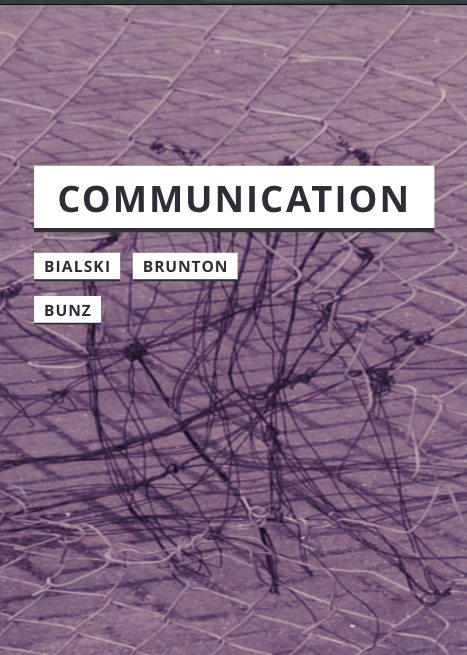Fionnáin reviewed Communication by Paula Bialski
Two out of three ain't bad
4 stars
Communication is a deep, entertaining and contemporary 3-part collection about communication and technology by three leading researchers in this area. The authors each write about specific areas of communication relating to technological communication.
Finn Brunton's chapter, Hello From Earth explores the highest level idea of communication, asking how two tape recorders, two alien species or two computers might communicate. Through this, he asks broad and often entertaining questions about what communication means from one entity to another, be that human-to-human or human-to-machine, or human-to-alien or machine-to-machine. It features a fascinating history of communication theory, and is very well written.
Mercedes Bunz's The Force of Communication follows this by looking back from computer to human, exploring the "force" of communication when a machine directs a message at a human. Her writing walks a line between theory and accessibility perfectly. Examples used include self-service checkouts and the iPad, and Bunz …
Communication is a deep, entertaining and contemporary 3-part collection about communication and technology by three leading researchers in this area. The authors each write about specific areas of communication relating to technological communication.
Finn Brunton's chapter, Hello From Earth explores the highest level idea of communication, asking how two tape recorders, two alien species or two computers might communicate. Through this, he asks broad and often entertaining questions about what communication means from one entity to another, be that human-to-human or human-to-machine, or human-to-alien or machine-to-machine. It features a fascinating history of communication theory, and is very well written.
Mercedes Bunz's The Force of Communication follows this by looking back from computer to human, exploring the "force" of communication when a machine directs a message at a human. Her writing walks a line between theory and accessibility perfectly. Examples used include self-service checkouts and the iPad, and Bunz slowly directs the argument at how design and machine communication has gradually moved toward infantilisation.
Paula Bialski's chapter documents how programmers communicate to one another through a use case study of a specific code review system. The chapter promises to look at programmer-to-programmer communication, but focuses only on how a specific scoring system affects decisions in how programs are written. There seems to be a lot missing in the exploration (both face-to-face and the use of comments in code) which I assume were outside of the scope of this book.

